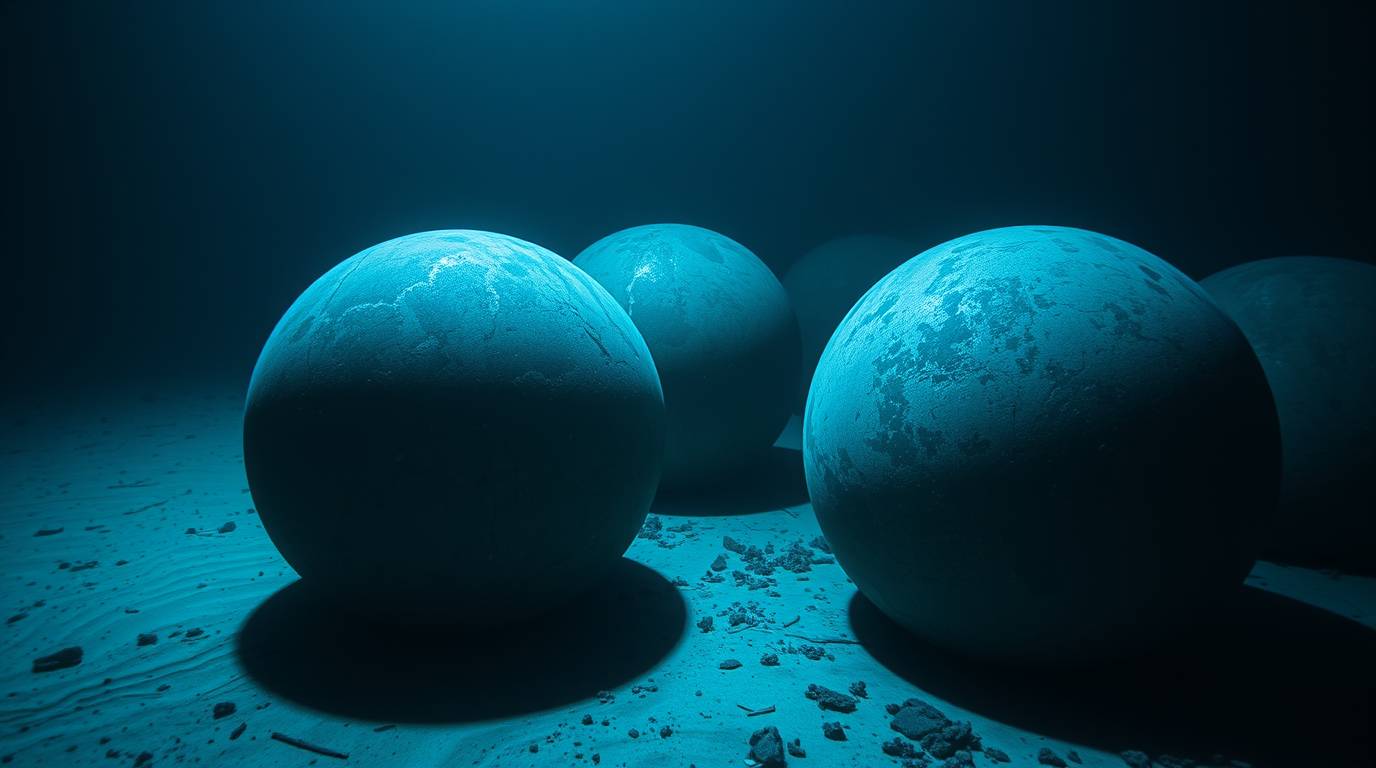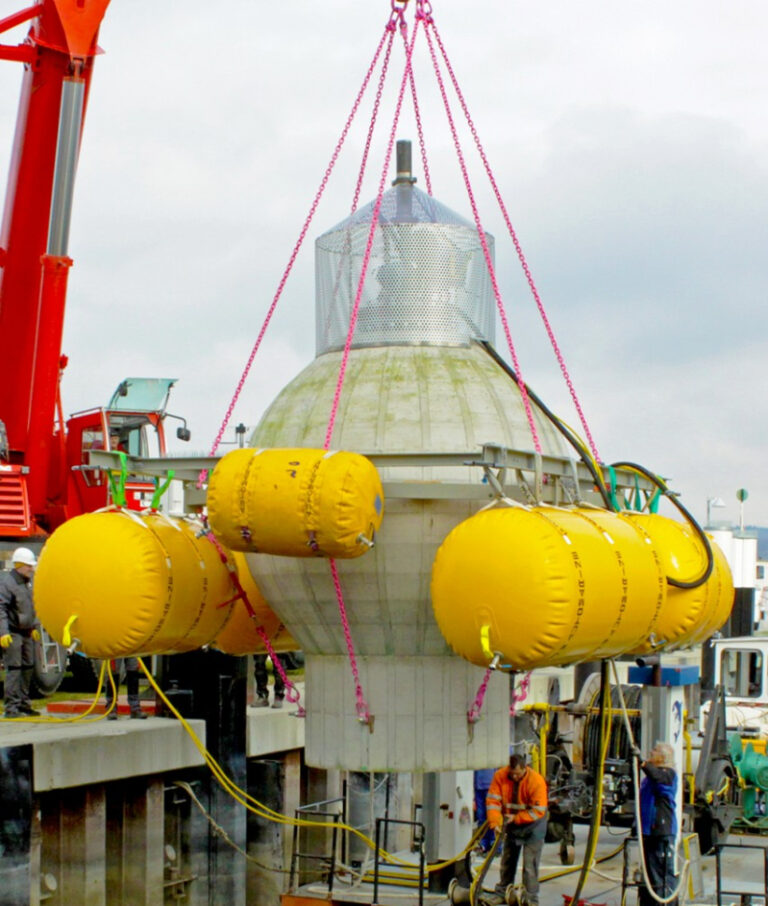
Two breakthrough renewable energy technologies show promising potential for transforming clean energy generation and storage. Fraunhofer’s StEnSea system, utilizing underwater concrete spheres, offers cost-effective energy storage at $177 per kWh – significantly lower than traditional battery storage. Meanwhile, the award-winning O-Wind Sphere presents an innovative solution for harnessing chaotic urban winds. With StEnSea’s pilot project launching off California’s coast by 2026 and theoretical storage potential of 817,000 GWh, these technologies could significantly advance the global transition to renewable energy.
This article marks is a departure from our usual articles about the hidden dangers of renewable energy, and instead highlights two new clean energy technologies that might actually work, offering innovative approaches to both energy storage and generation in challenging environments.
The first, a pioneering underwater energy storage system developed by Germany’s prestigious Fraunhofer research organization, could revolutionize how we store renewable energy. The second, an award-winning urban wind turbine, promises to harness previously untapped wind energy in dense city environments.
In this article
StEnSea: The Ocean’s Battery
In a significant advancement for energy storage technology, Fraunhofer’s StEnSea (Stored Energy in the Sea) project is preparing to deploy its first pilot installation off the coast of Long Beach, California. The system, which has been under development since 2011, utilizes large concrete spheres placed on the ocean floor at depths of approximately 2,000 feet.
“The pressure increases about one atmosphere for every 10 meters of water depth,” explains NOAA data cited in the project documentation. This fundamental principle powers the system’s operation, with water pressure at the deployment depth reaching 60 times greater than at sea level – creating an immense natural force that can be harnessed for energy generation.

The mechanics of the system are elegantly simple yet highly effective. During periods of low electricity demand, water is pumped out of the spheres using cheap, surplus electricity. When energy demand peaks, operators open a portal in the sphere, allowing the high-pressure seawater to rush in, driving a turbine that generates electricity. This process mirrors traditional pumped hydro storage but eliminates the need for vast surface reservoirs and expensive dam construction.
The economics of the system are particularly compelling. Fraunhofer estimates the cost at $177 (€158) per kWh, significantly undercutting current battery storage solutions. For comparison, the National Renewable Energy Laboratory’s 2023 estimates place battery electric storage costs between $245 and $405 per kWh. This cost advantage could make StEnSea a game-changer in regions with suitable ocean geography.

The pilot project, scheduled for completion by late 2026, will feature a 30-foot (9m) diameter sphere capable of generating 0.5 MW of power with a 0.4 MWh capacity – sufficient to power a typical U.S. home for approximately two weeks. The U.S. Department of Energy has already invested $4 million in the project, demonstrating federal confidence in the technology.
“StEnSea has a theoretical storage potential of 817,000 GWh, which would be enough to power 75 million homes in Germany, France, and the UK for about a year,” states Fraunhofer’s analysis. Future plans include testing larger 100-foot (30m) diameter spheres, potentially scaling up the technology’s impact significantly.
O-Wind Sphere: Revolutionizing Urban Wind Power
The second innovation, the O-Wind Sphere from O-Innovations, approaches renewable energy from a different angle, targeting the unique challenges of urban environments. The device won the prestigious Dyson Award in 2018, with James Dyson himself praising its ingenuity: “The O-Wind Turbine takes the enormous challenge of producing renewable energy and using geometry it can harness energy in places where we’ve scarcely been looking — cities. It’s an ingenious concept.”

The sphere’s design leverages Bernoulli’s principle, utilizing vents with large entrances and smaller exits to create pressure differentials that drive the turbine. This innovative approach allows the device to capture wind energy from any direction, making it particularly suitable for urban environments where wind patterns are typically chaotic and unpredictable.
As O-Innovations explains on their website, “As the global population grows, our cities also increase in height and density, receiving less sunlight and experiencing more wind at ground level. To generate the necessary energy for our cities locally, we must harness this strong and chaotic wind.” The omni-directional design represents a significant departure from traditional wind turbines, which must be oriented toward prevailing wind directions.
How they compare:
| Feature | StEnSea (Undersea Storage) | O-Wind Sphere (Urban Wind) |
|---|---|---|
| Technology Type | Energy Storage | Wind Energy Generation |
| Location | Deep ocean (600m+) | Urban environments |
| Output (pilot) | 0.5 MW / 0.4 MWh | Not specified |
| Cost Estimate | $177 per kWh | Not available |
| Scalability | Very high (817,000 GWh) | Uncertain |
| Commercial Readiness | Pilot underway | Early concept |
| Key Challenge | Undersea cable security | Technical/commercial viability |
Expert take
While both technologies show promise, they face distinct challenges.
- StEnSea stands out as a practical, scalable solution for regions near deep ocean drop-offs. Its cost advantage over batteries and the backing of major research and government funding suggest it could carve out a niche in the global energy storage market—particularly where geography allows.
- O-Wind Sphere is an intriguing idea for cities, but its lack of technical data and commercial deployments means it’s still in the “watch this space” category. It’s a creative approach to urban wind, but widespread impact remains to be seen.
StEnSea appears poised to become a valuable tool in the renewable energy transition, especially for coastal regions. The O-Wind Sphere, while innovative, has yet to prove itself beyond awards and prototypes. As CleanTechnica notes, check back in 2030 for a progress report—until then, StEnSea is the one to watch
These innovations represent significant steps forward in addressing two critical challenges in renewable energy: storage capacity and urban generation. As the world continues its transition to renewable energy sources, technologies like StEnSea and the O-Wind Sphere could play crucial roles in creating a more sustainable energy future.
References:
Two New Renewable Energy Technologies That Just Might Work, Clean Technica, May 18 2025
YOU MIGHT ALSO LIKE:







